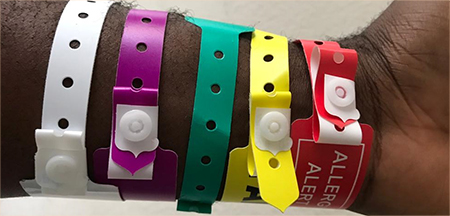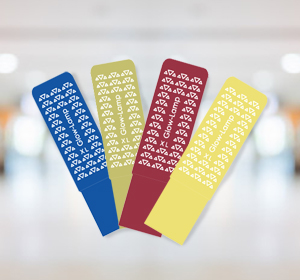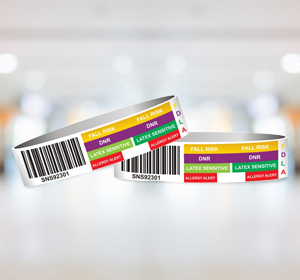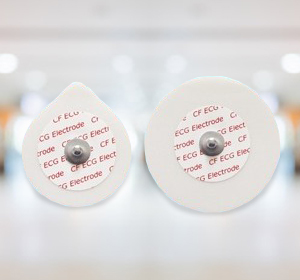Categories
Failed Skin Precaution Identification Cost.
For a sense of the total costs of the treatment of pressure ulcers, data from the 1990s, although old, can shed a light on current costs. In 1996, $6.4 billion was spent on pressure ulcers, which was 1.2% of total health care costs in the US.In 2006, excluding neonatal and maternal conditions, almost $11 billion was paid out for hospital stays in which pressure ulcer was either a primary or secondary diagnosis.



Solution Wristband
How To Use Bright-ID Band
This is a patient safety device and must be used as such.
Each patient admitted to the hospital must have their level of risk properly assessed and identified. This is to prevent misidentifications of risk factors, near misses and or actual harm to patients that might lead to death and or expensive lawsuits.
STEPS:
- During admission assessment, all “traditional” patient wristband and previous hospital wristbands must be removed.
- Monitor Technicians / Unit Secretary will print new hospital ID band and also attach a new Bright-ID Band to the chart (This applies to only hospitals with paper chatting)
- All allergies must be written in the space provided for allergies.
- “F” – is peeled back to reveal “fall risk”
- “S” – is peeled back to reveal skin precautions. This is used to indicate the potential for skin breakdown or the presence of wound(s).
- “A” – is peeled back to notify staff to be cautious of allergies
- “L” – is for Limb Alert
F
Fall Risk
D
Do Not Resuscitate (DNR)
S
Skin Precautions
A
Drug Allergy
N
Nil Per Os
L
Limb Alert
Subscriber reviews
Brightl-ID band puts my most important patient risk identifiers all at one place. This makes it both easy and fast when looking for patient risk factors.
I no longer have to deal with this clutter! Thanks to Bright-ID Band.
As if being sick is not enough, this is the worst discomfort i had to deal with during my time in the hospital. Glad there is a way out now and do not have to contend with all those wristbands.










